Chengdong Ma
Vulnerable Agent Identification in Large-Scale Multi-Agent Reinforcement Learning
Sep 18, 2025Abstract:Partial agent failure becomes inevitable when systems scale up, making it crucial to identify the subset of agents whose compromise would most severely degrade overall performance. In this paper, we study this Vulnerable Agent Identification (VAI) problem in large-scale multi-agent reinforcement learning (MARL). We frame VAI as a Hierarchical Adversarial Decentralized Mean Field Control (HAD-MFC), where the upper level involves an NP-hard combinatorial task of selecting the most vulnerable agents, and the lower level learns worst-case adversarial policies for these agents using mean-field MARL. The two problems are coupled together, making HAD-MFC difficult to solve. To solve this, we first decouple the hierarchical process by Fenchel-Rockafellar transform, resulting a regularized mean-field Bellman operator for upper level that enables independent learning at each level, thus reducing computational complexity. We then reformulate the upper-level combinatorial problem as a MDP with dense rewards from our regularized mean-field Bellman operator, enabling us to sequentially identify the most vulnerable agents by greedy and RL algorithms. This decomposition provably preserves the optimal solution of the original HAD-MFC. Experiments show our method effectively identifies more vulnerable agents in large-scale MARL and the rule-based system, fooling system into worse failures, and learns a value function that reveals the vulnerability of each agent.
EconGym: A Scalable AI Testbed with Diverse Economic Tasks
Jun 13, 2025Abstract:Artificial intelligence (AI) has become a powerful tool for economic research, enabling large-scale simulation and policy optimization. However, applying AI effectively requires simulation platforms for scalable training and evaluation-yet existing environments remain limited to simplified, narrowly scoped tasks, falling short of capturing complex economic challenges such as demographic shifts, multi-government coordination, and large-scale agent interactions. To address this gap, we introduce EconGym, a scalable and modular testbed that connects diverse economic tasks with AI algorithms. Grounded in rigorous economic modeling, EconGym implements 11 heterogeneous role types (e.g., households, firms, banks, governments), their interaction mechanisms, and agent models with well-defined observations, actions, and rewards. Users can flexibly compose economic roles with diverse agent algorithms to simulate rich multi-agent trajectories across 25+ economic tasks for AI-driven policy learning and analysis. Experiments show that EconGym supports diverse and cross-domain tasks-such as coordinating fiscal, pension, and monetary policies-and enables benchmarking across AI, economic methods, and hybrids. Results indicate that richer task composition and algorithm diversity expand the policy space, while AI agents guided by classical economic methods perform best in complex settings. EconGym also scales to 10k agents with high realism and efficiency.
Amulet: ReAlignment During Test Time for Personalized Preference Adaptation of LLMs
Feb 26, 2025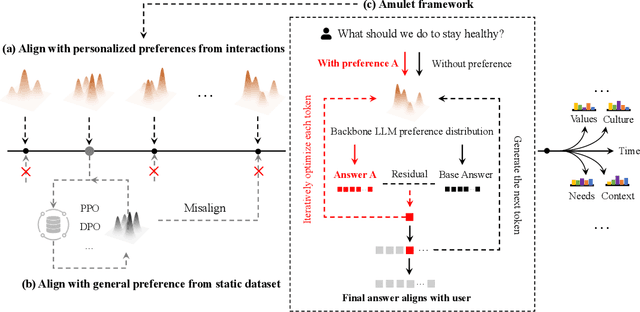
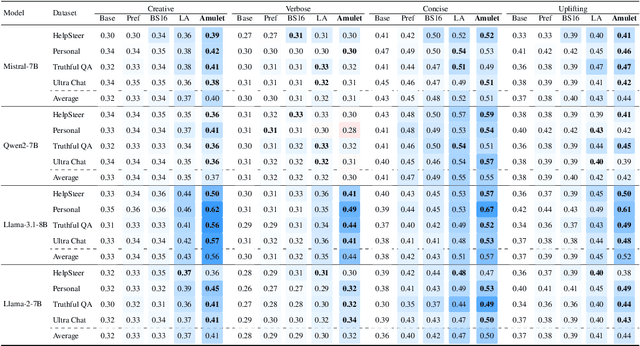


Abstract:How to align large language models (LLMs) with user preferences from a static general dataset has been frequently studied. However, user preferences are usually personalized, changing, and diverse regarding culture, values, or time. This leads to the problem that the actual user preferences often do not coincide with those trained by the model developers in the practical use of LLMs. Since we cannot collect enough data and retrain for every demand, researching efficient real-time preference adaptation methods based on the backbone LLMs during test time is important. To this end, we introduce Amulet, a novel, training-free framework that formulates the decoding process of every token as a separate online learning problem with the guidance of simple user-provided prompts, thus enabling real-time optimization to satisfy users' personalized preferences. To reduce the computational cost brought by this optimization process for each token, we additionally provide a closed-form solution for each iteration step of the optimization process, thereby reducing the computational time cost to a negligible level. The detailed experimental results demonstrate that Amulet can achieve significant performance improvements in rich settings with combinations of different LLMs, datasets, and user preferences, while maintaining acceptable computational efficiency.
Magnetic Preference Optimization: Achieving Last-iterate Convergence for Language Models Alignment
Oct 22, 2024



Abstract:Self-play methods have demonstrated remarkable success in enhancing model capabilities across various domains. In the context of Reinforcement Learning from Human Feedback (RLHF), self-play not only boosts Large Language Model (LLM) performance but also overcomes the limitations of traditional Bradley-Terry (BT) model assumptions by finding the Nash equilibrium (NE) of a preference-based, two-player constant-sum game. However, existing methods either guarantee only average-iterate convergence, incurring high storage and inference costs, or converge to the NE of a regularized game, failing to accurately reflect true human preferences. In this paper, we introduce Magnetic Preference Optimization (MPO), a novel approach capable of achieving last-iterate convergence to the NE of the original game, effectively overcoming the limitations of existing methods. Building upon Magnetic Mirror Descent (MMD), MPO attains a linear convergence rate, making it particularly suitable for fine-tuning LLMs. To ensure our algorithm is both theoretically sound and practically viable, we present a simple yet effective implementation that adapts the theoretical insights to the RLHF setting. Empirical results demonstrate that MPO can significantly enhance the performance of LLMs, highlighting the potential of self-play methods in alignment.
A Survey on Self-play Methods in Reinforcement Learning
Aug 02, 2024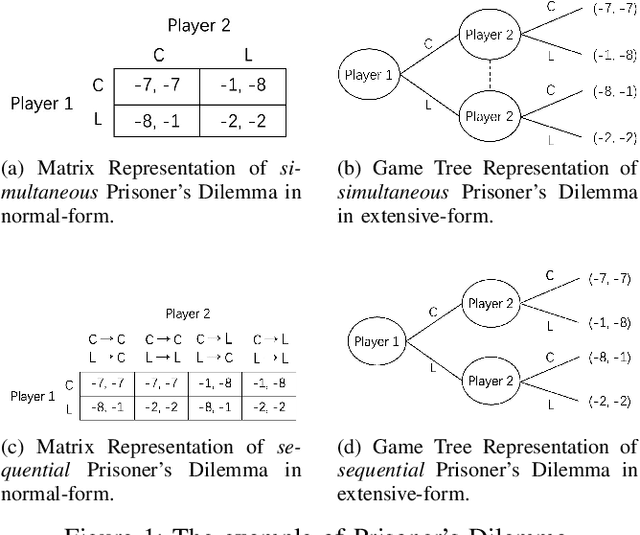
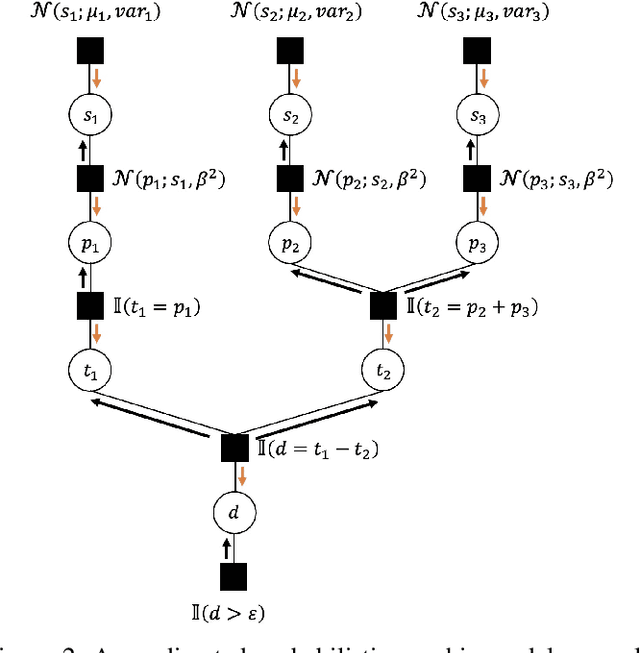
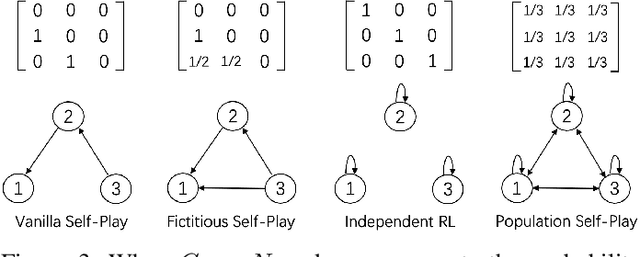
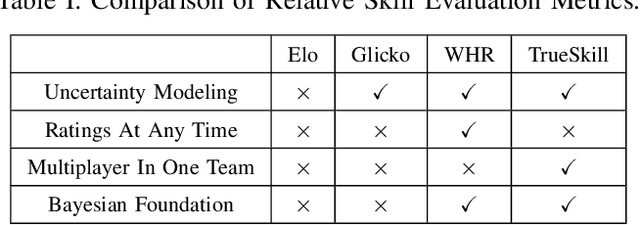
Abstract:Self-play, characterized by agents' interactions with copies or past versions of itself, has recently gained prominence in reinforcement learning. This paper first clarifies the preliminaries of self-play, including the multi-agent reinforcement learning framework and basic game theory concepts. Then it provides a unified framework and classifies existing self-play algorithms within this framework. Moreover, the paper bridges the gap between the algorithms and their practical implications by illustrating the role of self-play in different scenarios. Finally, the survey highlights open challenges and future research directions in self-play. This paper is an essential guide map for understanding the multifaceted landscape of self-play in RL.
Fusion-PSRO: Nash Policy Fusion for Policy Space Response Oracles
Jun 03, 2024Abstract:A popular approach for solving zero-sum games is to maintain populations of policies to approximate the Nash Equilibrium (NE). Previous studies have shown that Policy Space Response Oracle (PSRO) algorithm is an effective multi-agent reinforcement learning framework for solving such games. However, repeatedly training new policies from scratch to approximate Best Response (BR) to opponents' mixed policies at each iteration is both inefficient and costly. While some PSRO variants initialize a new policy by inheriting from past BR policies, this approach limits the exploration of new policies, especially against challenging opponents. To address this issue, we propose Fusion-PSRO, which employs policy fusion to initialize policies for better approximation to BR. By selecting high-quality base policies from meta-NE, policy fusion fuses the base policies into a new policy through model averaging. This approach allows the initialized policies to incorporate multiple expert policies, making it easier to handle difficult opponents compared to inheriting from past BR policies or initializing from scratch. Moreover, our method only modifies the policy initialization phase, allowing its application to nearly all PSRO variants without additional training overhead. Our experiments on non-transitive matrix games, Leduc Poker, and the more complex Liars Dice demonstrate that Fusion-PSRO enhances the performance of nearly all PSRO variants, achieving lower exploitability.
Incentive Compatibility for AI Alignment in Sociotechnical Systems: Positions and Prospects
Mar 01, 2024

Abstract:The burgeoning integration of artificial intelligence (AI) into human society brings forth significant implications for societal governance and safety. While considerable strides have been made in addressing AI alignment challenges, existing methodologies primarily focus on technical facets, often neglecting the intricate sociotechnical nature of AI systems, which can lead to a misalignment between the development and deployment contexts. To this end, we posit a new problem worth exploring: Incentive Compatibility Sociotechnical Alignment Problem (ICSAP). We hope this can call for more researchers to explore how to leverage the principles of Incentive Compatibility (IC) from game theory to bridge the gap between technical and societal components to maintain AI consensus with human societies in different contexts. We further discuss three classical game problems for achieving IC: mechanism design, contract theory, and Bayesian persuasion, in addressing the perspectives, potentials, and challenges of solving ICSAP, and provide preliminary implementation conceptions.
Panacea: Pareto Alignment via Preference Adaptation for LLMs
Feb 03, 2024



Abstract:Current methods for large language model alignment typically use scalar human preference labels. However, this convention tends to oversimplify the multi-dimensional and heterogeneous nature of human preferences, leading to reduced expressivity and even misalignment. This paper presents Panacea, an innovative approach that reframes alignment as a multi-dimensional preference optimization problem. Panacea trains a single model capable of adapting online and Pareto-optimally to diverse sets of preferences without the need for further tuning. A major challenge here is using a low-dimensional preference vector to guide the model's behavior, despite it being governed by an overwhelmingly large number of parameters. To address this, Panacea is designed to use singular value decomposition (SVD)-based low-rank adaptation, which allows the preference vector to be simply injected online as singular values. Theoretically, we prove that Panacea recovers the entire Pareto front with common loss aggregation methods under mild conditions. Moreover, our experiments demonstrate, for the first time, the feasibility of aligning a single LLM to represent a spectrum of human preferences through various optimization methods. Our work marks a step forward in effectively and efficiently aligning models to diverse and intricate human preferences in a controllable and Pareto-optimal manner.
Red Teaming Game: A Game-Theoretic Framework for Red Teaming Language Models
Oct 10, 2023Abstract:Deployable Large Language Models (LLMs) must conform to the criterion of helpfulness and harmlessness, thereby achieving consistency between LLMs outputs and human values. Red-teaming techniques constitute a critical way towards this criterion. Existing work rely solely on manual red team designs and heuristic adversarial prompts for vulnerability detection and optimization. These approaches lack rigorous mathematical formulation, thus limiting the exploration of diverse attack strategy within quantifiable measure and optimization of LLMs under convergence guarantees. In this paper, we present Red-teaming Game (RTG), a general game-theoretic framework without manual annotation. RTG is designed for analyzing the multi-turn attack and defense interactions between Red-team language Models (RLMs) and Blue-team Language Model (BLM). Within the RTG, we propose Gamified Red-teaming Solver (GRTS) with diversity measure of the semantic space. GRTS is an automated red teaming technique to solve RTG towards Nash equilibrium through meta-game analysis, which corresponds to the theoretically guaranteed optimization direction of both RLMs and BLM. Empirical results in multi-turn attacks with RLMs show that GRTS autonomously discovered diverse attack strategies and effectively improved security of LLMs, outperforming existing heuristic red-team designs. Overall, RTG has established a foundational framework for red teaming tasks and constructed a new scalable oversight technique for alignment.
Fully Decentralized Model-based Policy Optimization for Networked Systems
Jul 13, 2022



Abstract:Reinforcement learning algorithms require a large amount of samples; this often limits their real-world applications on even simple tasks. Such a challenge is more outstanding in multi-agent tasks, as each step of operation is more costly requiring communications or shifting or resources. This work aims to improve data efficiency of multi-agent control by model-based learning. We consider networked systems where agents are cooperative and communicate only locally with their neighbors, and propose the decentralized model-based policy optimization framework (DMPO). In our method, each agent learns a dynamic model to predict future states and broadcast their predictions by communication, and then the policies are trained under the model rollouts. To alleviate the bias of model-generated data, we restrain the model usage for generating myopic rollouts, thus reducing the compounding error of model generation. To pertain the independence of policy update, we introduce extended value function and theoretically prove that the resulting policy gradient is a close approximation to true policy gradients. We evaluate our algorithm on several benchmarks for intelligent transportation systems, which are connected autonomous vehicle control tasks (Flow and CACC) and adaptive traffic signal control (ATSC). Empirically results show that our method achieves superior data efficiency and matches the performance of model-free methods using true models.
 Add to Chrome
Add to Chrome Add to Firefox
Add to Firefox Add to Edge
Add to Edge